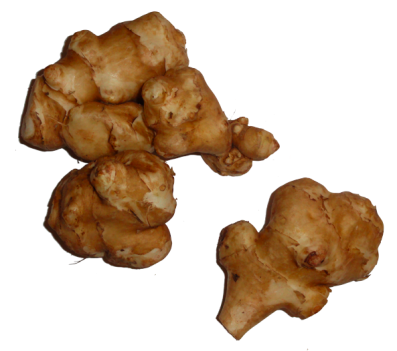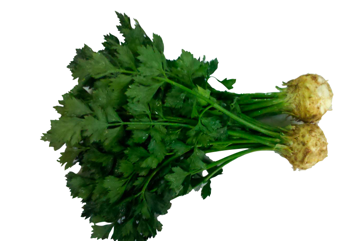5 Things You Didn't Know About Jerusalem Artichokes
 Sunday, October 2, 2011 at 3:08PM
Sunday, October 2, 2011 at 3:08PM You can call it a Sunchoke, Earth Apple, or Jerusalem Artichoke but either way it is delicous! It looks a lot like ginger, but tastes more like a potato. Here are five things you probaby didn't know about Jerusalem Artichokes:

1. They are related to Sunflowers.
In fact the actual Jerusalem Artichoke that we eat is the root of a plant that has a flower that looks just like a Sunflower. They are named Jerusalem Artichokes because the Italian word for sunflower is "girasole" which means "turning to the sun" and was somehow later corrupted into the word "Jerusalem."
2. Jerusalem artichoke is often recommended as a dietary supplement for people suffering from diabetes.
It has been suggested that eaten frequently it reduces the blood sugar levels in diabetes patients. Jerusalem artichoke works as a blood sugar stabilizer for people with Diabetes by creating a natural insulin effect in the body. A reduction of cholesterolmia has been reported in diabetic subjects receiving a diet supplemented in fructo-oligosaccharides.
3. Part of an Agricultural Pyramid Scheme
In the 1980s, the Jerusalem artichoke also gained some notoriety when its seeds were planted by midwestern US farmers at the prodding of an agricultural pyramid scheme. There was little market for the tuber in that part of the US at the time, but farmers were assured that it would soon appear on the commodities market. Unfortunately, the only profits were realized by the initial distributors and the first few levels of farmers (who sold their seeds to subsequent levels of the pyramid). As a result many of the farms which had planted large quantities of the crop were ruined. A book by Joseph A. Amato, Jerusalem Artichoke: The Buying and Selling of the Rural American Dream, University of Minnesota Press, Minneapolis, MN chronicles the pyramid scheme.
4. Explorers Loved It
Jerusalem artichoke was cultivated in North America about 400-500 years ago, and the Lewis and Clark expedition ate Jerusalem artichokes provided by Native Americans during their journey across the United States. Also, The first written account of the plant was a report issued in 1605 by Champlain, a European explorer, who observed Native Americans growing Jerusalem artichoke along with corn and beans in a Cape Cod garden.
5. Alcohol Anyone?
The sugars from one acre of Jerusalem artichoke can produce 500 gallons of alcohol, which is about double the amount produced by either corn or sugarbeet. The German's make an alcohol out of it called Topinambur, which according to people on the Internet, it does not taste very good.




